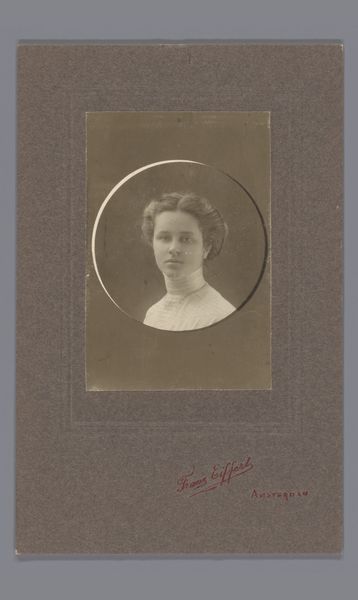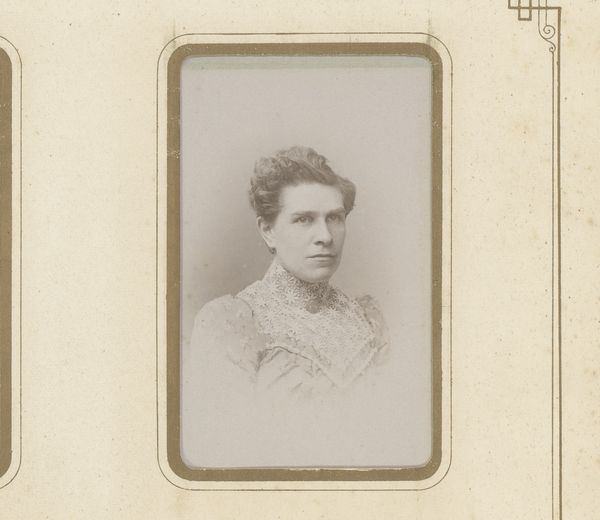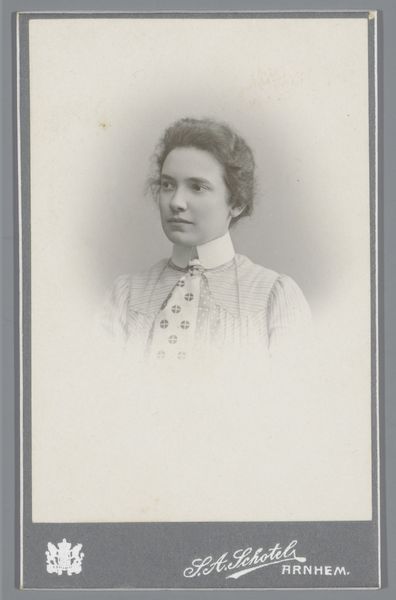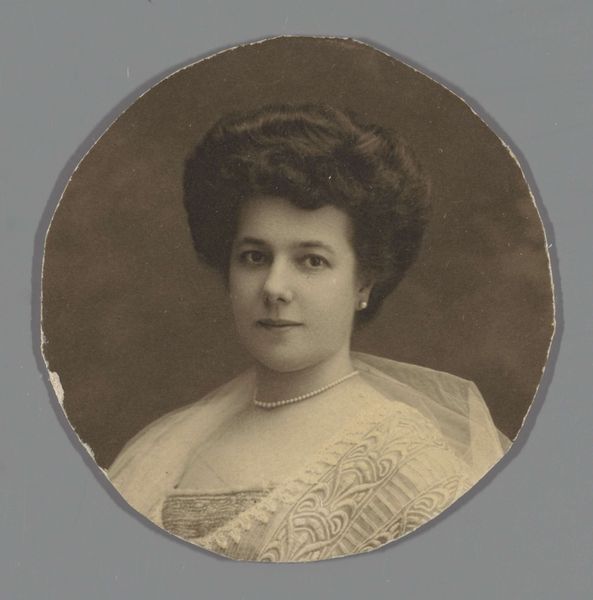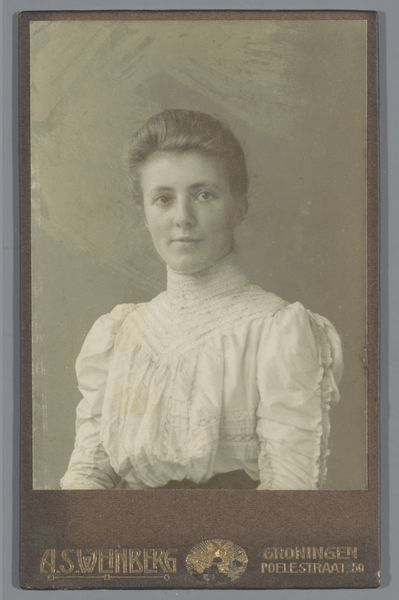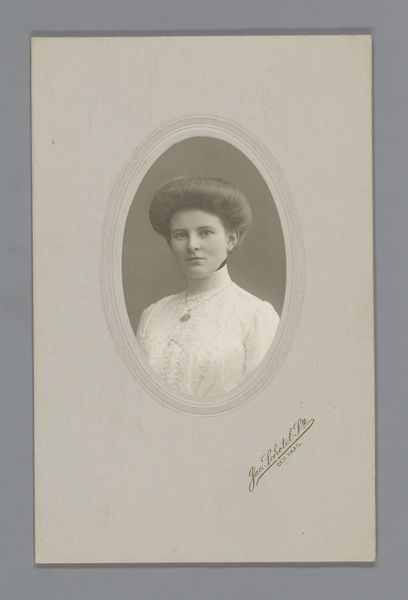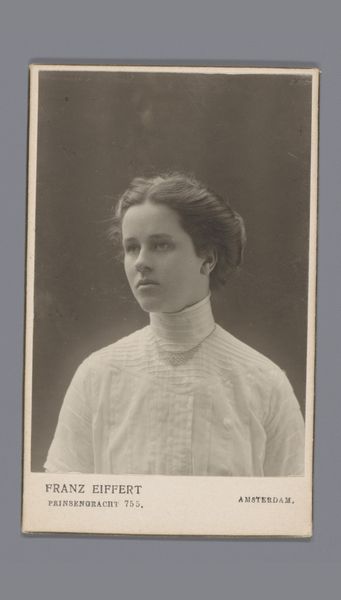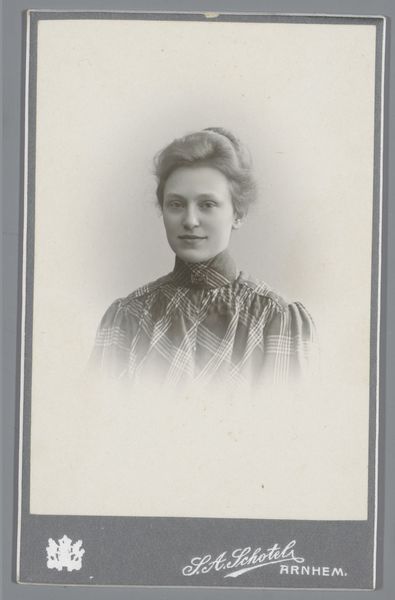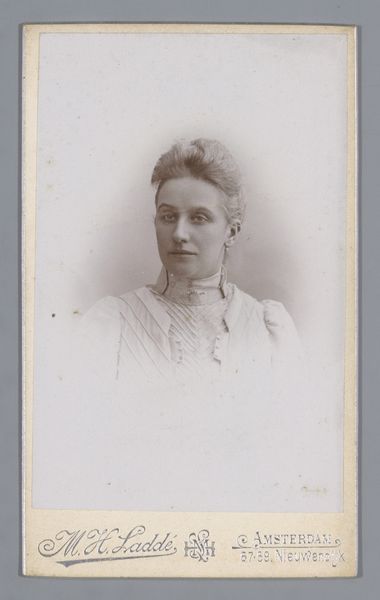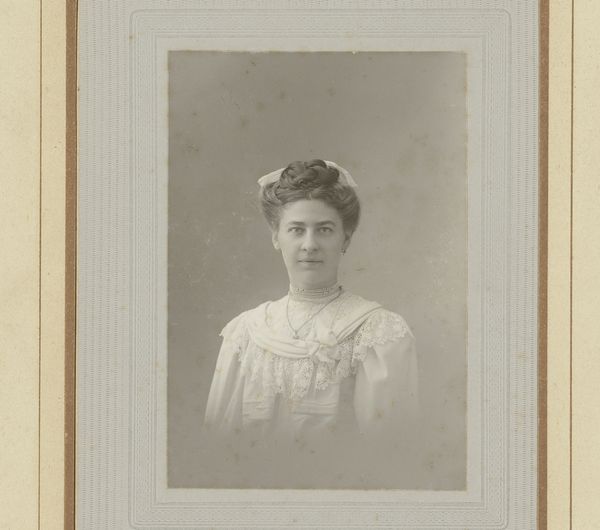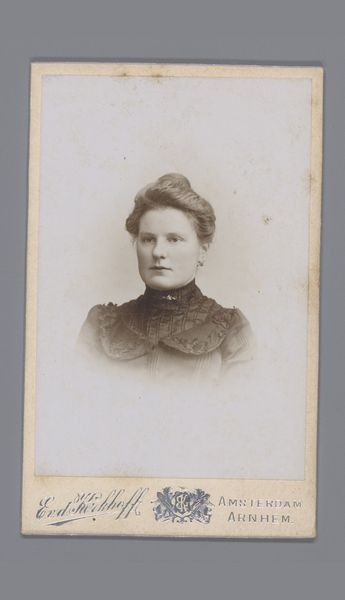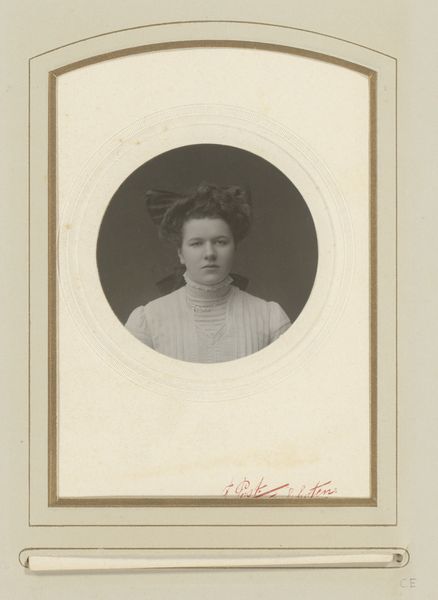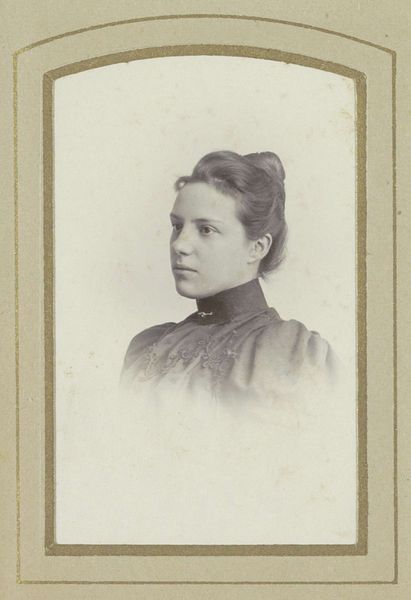
photography, gelatin-silver-print
#
portrait
#
photography
#
gelatin-silver-print
#
modernism
#
realism
Dimensions: height 64 mm, width 64 mm
Copyright: Rijks Museum: Open Domain
Curator: Welcome! Today, we're observing Franz Eiffert's "Portrait of Johanna Geertruida Jonker," taken around 1911. This gelatin-silver print is a beautiful example of early 20th-century portraiture, currently held at the Rijksmuseum. Editor: It's striking how somber and reserved the portrait feels. The limited palette and the sitter's direct gaze create an intense and almost unsettling sense of intimacy. Curator: Precisely. Eiffert was known for his dedication to realism, capturing a very direct and unfiltered representation of his subjects. Photography during this period played a critical role in constructing and democratizing representations of individuals. Editor: And I think it also tells us something about the construction of feminine identity. Johanna is posed passively; her high-necked dress speaks of constraint and propriety, values upheld at the time. Was Eiffert commenting on these societal expectations or simply reflecting them? Curator: It is difficult to assert what his true feelings were, but these photographic portraits were very valuable at the time, enabling members of rising middle classes the opportunity to construct their identity, emulating styles, patterns, and artistic codes. It democratized representation, it gave agency and enabled participation within a rising image culture. Editor: Yes, but this ‘democratization’ must be seen critically. While photography became more accessible, who got to control the narrative? Here, a male photographer frames a woman, subtly reinforcing societal norms even as photography allows for broader self-representation. Curator: Certainly, the power dynamics are critical, especially within a studio setting. We must question who is controlling the vision and representation. Yet, by preserving and sharing these images within public collections, we continue to reflect upon those codes and patterns that shaped individual identities within broader, image driven cultures. Editor: Ultimately, artworks like these force us to acknowledge photography's complex role – both a tool for democratizing representation and a stage upon which societal roles and inequalities play out. Curator: It gives one much to consider. I appreciate how your points push us to really see how photography intertwines the personal with public spheres, it reveals the many hidden layers behind something that appears as just a simple photo.
Comments
No comments
Be the first to comment and join the conversation on the ultimate creative platform.
